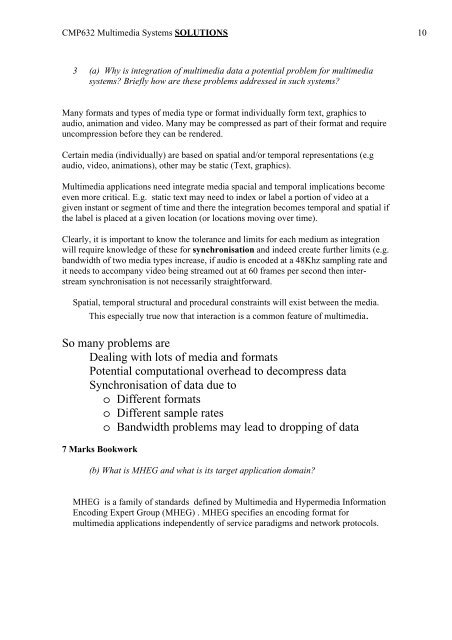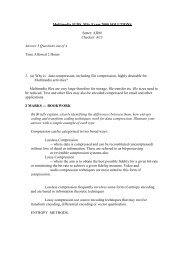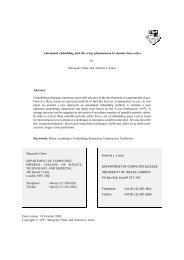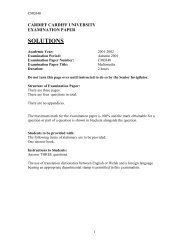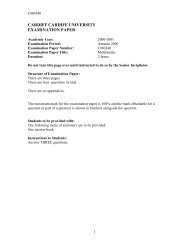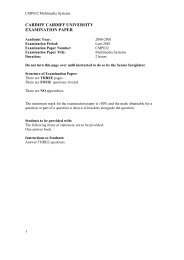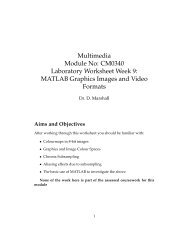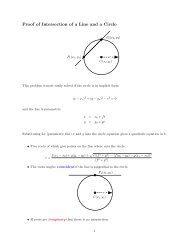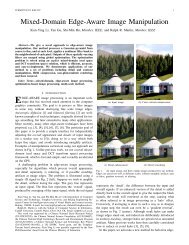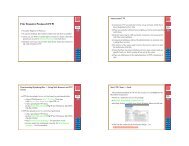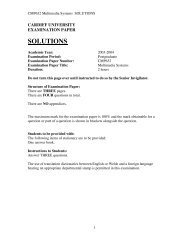Exam Solutions 2002 - Cardiff University
Exam Solutions 2002 - Cardiff University
Exam Solutions 2002 - Cardiff University
You also want an ePaper? Increase the reach of your titles
YUMPU automatically turns print PDFs into web optimized ePapers that Google loves.
CMP632 Multimedia Systems SOLUTIONS 10<br />
3 (a) Why is integration of multimedia data a potential problem for multimedia<br />
systems? Briefly how are these problems addressed in such systems?<br />
Many formats and types of media type or format individually form text, graphics to<br />
audio, animation and video. Many may be compressed as part of their format and require<br />
uncompression before they can be rendered.<br />
Certain media (individually) are based on spatial and/or temporal representations (e.g<br />
audio, video, animations), other may be static (Text, graphics).<br />
Multimedia applications need integrate media spacial and temporal implications become<br />
even more critical. E.g. static text may need to index or label a portion of video at a<br />
given instant or segment of time and there the integration becomes temporal and spatial if<br />
the label is placed at a given location (or locations moving over time).<br />
Clearly, it is important to know the tolerance and limits for each medium as integration<br />
will require knowledge of these for synchronisation and indeed create further limits (e.g.<br />
bandwidth of two media types increase, if audio is encoded at a 48Khz sampling rate and<br />
it needs to accompany video being streamed out at 60 frames per second then interstream<br />
synchronisation is not necessarily straightforward.<br />
Spatial, temporal structural and procedural constraints will exist between the media.<br />
This especially true now that interaction is a common feature of multimedia.<br />
So many problems are<br />
• Dealing with lots of media and formats<br />
• Potential computational overhead to decompress data<br />
• Synchronisation of data due to<br />
o Different formats<br />
o Different sample rates<br />
o Bandwidth problems may lead to dropping of data<br />
7 Marks Bookwork<br />
(b) What is MHEG and what is its target application domain?<br />
MHEG is a family of standards defined by Multimedia and Hypermedia Information<br />
Encoding Expert Group (MHEG) . MHEG specifies an encoding format for<br />
multimedia applications independently of service paradigms and network protocols.


